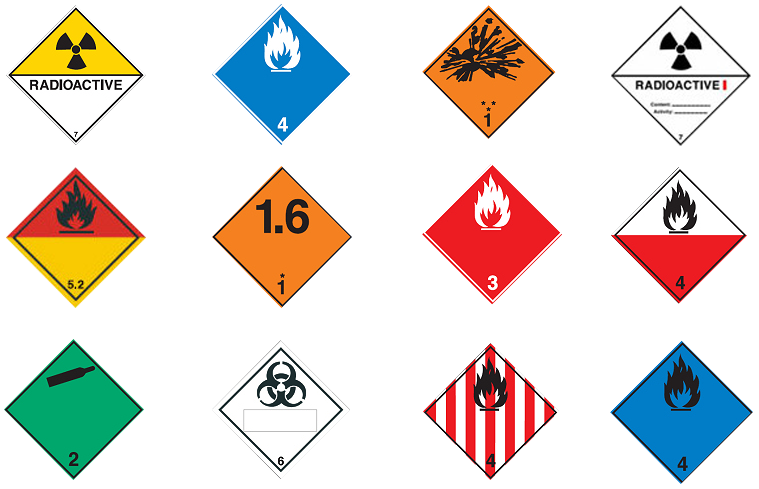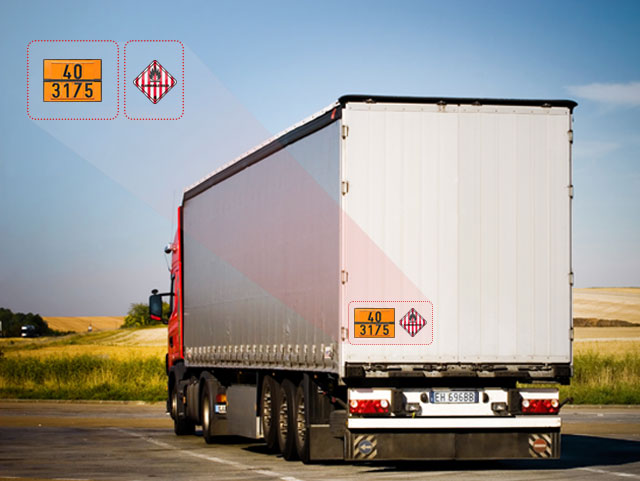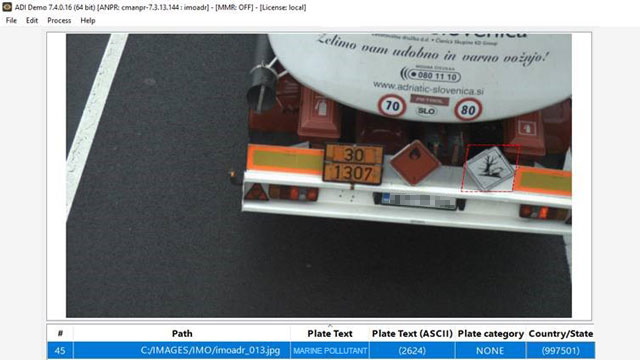Families with little kids know that certain products must be locked away from children. We all know that bleach is not for refreshment, even without looking at the bottle. People working in the transportation and logistics industry also understand that certain goods require special attention due to their hazardous nature. The only problem is that these people often get nothing more than a diamond-shaped symbol with a number. Not knowing what the symbols – IMDG labels – mean, especially if you don’t encounter these signs daily, could have dire consequences.
Thankfully, the advanced optical character recognition (OCR) technology different entities use in license plate recognition can help. But how can OCR software handle something like IMDG Code Classes where the challenge is reading not characters but symbols?
IMDG Code Classes Explained
Dangerous goods transportation is a highly regulated area. There are respective regulations for each shipping method, updated on an annual or biannual basis. There are five modes to transport dangerous goods:
- ADR: road (by truck or lorry)
- RID: railway
- ADN: inland waterway
- ICAO/IATA: air
- IMDG: sea.
The IMDG Code Classes were developed and agreed upon in 1974 by the International Maritime Organization (IMO) as an international code system for the maritime transport of dangerous goods in packaged form. Their objective is to enhance and harmonize the safe carriage of hazardous goods and prevent environmental pollution.
A standardized diamond-shaped label system represents nine IMDG Code Classes and the materials falling under them. These labels with symbols and category numbers in the lowest corner of the diamond ensure that anyone can understand the nature of the material inside the container without opening it and follow proper handling practices. The standard procedure is to display these signals on the container the dangerous goods travel in from start to finish – regardless of origin, destination, and mode of transportation.

A Challenge in Hazmat Sign Interpretation
IMDG labels have different requirements in different transport modes and show the main class and subcategory. ADR and E-ADR signs, on the other hand, tell the actual UN Number of the carried dangerous substances. When it comes to OCR solutions, there is a reversed relation between IMDG and ADR/E-ADR signs. Regular people have problems interpreting ADR/E-ADR signs, while OCR software can easily read these signs and turn them into data. When interpreting the IMDG system, common sense is often not enough. Would you know the difference between a black flame and a white fire symbol? Not to mention that there are nine IMDG code categories in total, each indicating a different type of hazard.
In some instances, IMDG labels include descriptive words, but this isn’t an obligatory feature. Therefore, not even the most advanced OCR solutions could help; unlike in ADR/E-ADR signs, there are no letters to recognize and interpret aside from the small category number.
At least that was the case until now.

How Carmen® Deals With IMDG Code Classes
Carmen®, the industry-leading optical OCR solution, has been in the automatic license plate recognition (ANPR/ALPR) market for many decades. Although the many engines behind Carmen® handle various situations like non-Latin characters, reflective surfaces, etc., with ease, the correct interpretation of image symbols is an entirely different story. Thankfully, the fact that IMDG codes are standard helps a lot; even when signs look slightly different, they remain recognizable anywhere in the world. The real challenge is correctly reading and recognizing the IMDG labels and displaying what they mean on the screen.
In the early test iteration of the IMO engine, Carmen® recognized IMDG symbols but couldn’t ‘translate’ them to words. Users still got symbols as a result. With the latest version of the IMO engine, this changed. When images of containers or trucks with IMDG labels go through Carmen®, its ANPR software interprets what it sees and displays the meaning of the IMDG symbol in plain English. For example, when a dead tree and fish symbol appears – one of the few signs lacking the number in the lowest corner of the diamond – Carmen® displays “marine pollutant” on the screen. With a black flame and the number ‘3’, Carmen® will let you know that it’s a flammable gas or liquid.

The Pros of Having the Carmen® IMO Engine
Aside from tracking dangerous goods containers worldwide, end-users – especially those in the transportation and logistics industry – gain two significant benefits with the Carmen® IMO engine. The first one is speed: since the new engine displays what IMDG symbols mean, there is no need to look up a specific code’s meaning in databases or handbooks. Combined with an already well-established and widely-used system of other container codes, it helps companies quickly determine which container carries what. This significantly reduces the turnover time at ports and logistics centers.
The other advantage is that you don’t have to decipher the IMDG symbols. The gained time can be spent time on a better, more effective transportation process. This especially comes in handy if the route involves sections where transportation of dangerous goods is not permitted, or the container requires special handling, like tunnels, bridges, low emission zones, cargo ships, and ferries. In addition to that, companies not involved in transportation and logistics also benefit from knowing what kind of hazardous material is in the container and can take the necessary actions to permit or prevent the cargo from entering their premises.
Any questions or inquiries? We’re here to support you every step of the way:

